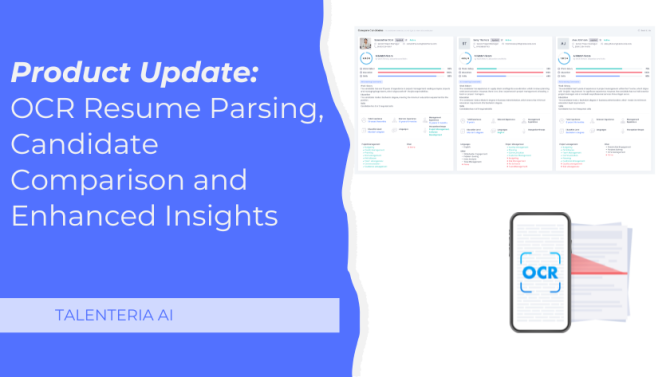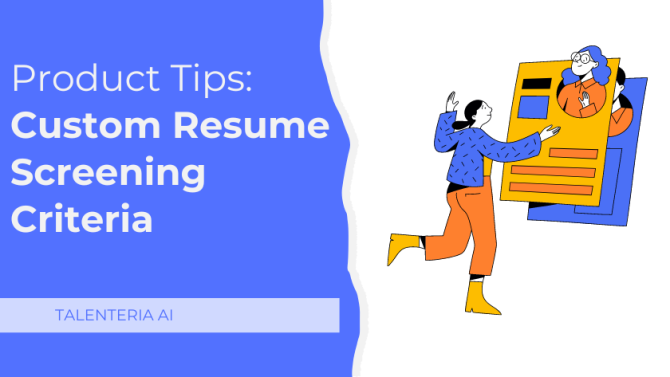
What Is Candidate Relationship Management?
Candidate relationship management is a process by which a firm or company maintains good relations with employees past, present, and potential. Companies do this to always have a ready talent pool to pull from whenever there is a need for it.
But how exactly do companies go about doing this? Well, in this article, we will aim to answer that question. In addition, we will tell you everything you need to know about candidate relationship management and what goes into it to make it work.
Defining Candidate Relationship Management
Candidate relationship management, or CRM, is a systematic method through which recruiters define a candidate’s overall experience at a company. This means that they have an estimate of every candidate’s journey - past, present, or potential.
This includes candidates with whom it did not work out in the present but might work out in the future, hourly employees, remote workers, and those who just work gigs. The company maintains a talent pipeline that they can call upon when the need arises to hire new talent. You keep in touch with them, stay informed about their employment situation. Why? Let’s see!
As we all know, it takes a company a lot of money to hire new talent. According to a Glassdoor survey, in the US, it takes 24 days and costs $4,000 to hire someone new. However, these are generalizations. Anyone who has been an active job seeker knows that it sometimes takes up to a month - longer for some - to land a job. This results in a lot of accrued losses due to an unfilled position in the company.
Knowing who you can reach out to eliminates the need to post advertisements for an open position. You deal directly with the talent that you know will be a good fit, saving your company a lot of time and effort.
What is more, keeping a detailed account of who you can reach out to means it is easier for you to make categories based on a job description. For example, you could keep a file on Human Resource Managers and reach into it when you need to make a hire.
Importance of Candidate Relationship Management
Now that we know what it is, let us dig a little deeper and find out how candidate relationship management makes your life as a recruiter easier:
- More than anything else, CRM gives you the edge on hiring. If you have a good network and you hear about layoffs at a certain company, you can immediately reach out to candidates on your list who were let go. You get a valuable head start for the hiring process because you spent the time nurturing a positive relationship with them carefully.
- Communication is the key to any good relationship. CRM demands this, and it pays dividends because people appreciate and remember this. Meaning, when people inevitably look up your company on Glassdoor or LinkedIn, they will see a string of reviews all praising your internal communication. It creates a positive brand image for your company, which is extremely valuable for attracting new talent.
- One of the main goals of candidate relationship management is engaging candidates with company updates, goals, and culture. If what you espouse lines up with the candidate’s expectations and desires, this lends itself to greater productivity on the candidate’s part when hired.
- Candidates will inevitably drop out. Why and when they do this need not be a puzzle if you have a good CRM plan in place. It tells you exactly at which stage of the hiring process the candidate dropped out, giving you some clues about what went wrong and how to improve on it. This also helps you recognize patterns, if any, in the hiring process.
- The goal of CRM is to build bridges. This means that even if a candidate is not selected for a job, the company keeps in touch with them. This ensures that the candidate does not lose their self-worth, and if you give them feedback, they will make the improvements they need to make and become a better, more qualified candidate overall.
- Diversity of skills is key for any organization, and CRM provides you with a way to keep track of exactly what you have waiting in the pipeline. If you feel like you lack diversity or have too many candidates with the same set of skills, you now have an idea of the kinds of people you should be on the lookout for, making your approach much more proactive.
The Candidate Relationship Management Process
There are five main steps in the candidate relationship management process. In this section, we will go through each one in detail:
Discover
As you can tell, this is the stage where you discover the potential talent you can use. You can get them from applications sent to you, job postings on social media, candidates you see potential in, candidates with whom it didn’t work out last time, etc. The main thing is to create an index of candidates you can reach out to without advertising for the positions.
What is important is that your records should keep track of all the interactions you have had with these candidates so that people who step in for you can continue where you left off. This is mainly to allow ease of access and contact.
Attract
Just because you keep a list of potential talent on hand does not mean they will come work for you at the drop of a hat. No, you have to make it attractive for them to join your company. You have to promote your company and what makes you special - you have to sell yourself. Why should people come work for you?
Exhibit all the reasons why your company is great, and do not do it in just words. Hold contests, pull talent to yourself. Put yourself in the spotlight. Remember, when you do this, you also stand a chance at converting passive job seekers to choose, consider, and look into your company. At the end of the day, that is the best outcome possible.
Engage
Now that you have their attention, you need to keep them engaged. The first thing you should do is, if the candidate ends up being rejected, you should give them a reason as to why and offer feedback on what they could have done better or differently. Otherwise, give them regularized company updates and stay in contact.
Your company needs to be there every step of the way for the candidate. They need to show that they care enough to be so invested in the candidate through constant communication. Only when they feel acknowledged will candidates be truly engaged in the work they do.
Nurture
Just because someone does not make the cut does not mean you should abandon them. Instead, let them know what they could have done to get the position they were aiming for. Keep them posted on the goings-on within the company. Keep tabs on them. Maybe send them a birthday email.
This is how you keep your potential candidates engaged and nurture a good relationship with them. This means that you have ready-made choices available to you when the need arises.
Hire
The last step is hiring. All the relationships you have fostered and candidates you have nurtured form your candidate relationship management program’s foundation. You can reach out to any of them in your time of need and expect to make a good hire for your company, and it is all because you took the time to get to know them and keep them engaged.
Features of a Good Candidate Relationship Management Solution
How do you sow the seeds for a good candidate relationship management solution in your company? In this section, we list out a few features that you should include in your system to make it the best it can be. They are:
- The very first thing you should do is create a candidate profile. This profile should include all relevant information about the candidate. Things like emails, offer letters, assessments, and any other communication. The candidate relationship management software you use, if you work for a staffing agency, needs to send this information at a moment’s notice to all external clients.
- You will have a list a mile wide. That means thousands of candidates on hold for a single position. The CRM software solution you use needs to pick the most relevant resumes amidst a sea of candidates, and it needs to do this fast.
- Automation is key to smooth workflows these days. Some aspects of candidate relationship management can be automated - namely, sending emails at regular intervals after a candidate has applied all the way to the interview process. This frees up a lot of your time that you can invest in doing other things.
- We may feel that ratings are cheap and superficial, but they serve an important purpose. Ratings allow us to form an opinion and make informed decisions. As such, managers need to be able to rate the profiles of candidates in your system. They can be ranked based on different criteria and assessments. It helps you pick the best candidate for a job.
- Going off the previous point, you can take this further and create a dedicated filing system where you separate candidate profiles based on what job title you want them for. Having this talent pool ready to go and at hand will save you a lot of hassle.
- The software should be fully integrated with the Applicant Tracking System in such a way that it can use the data you already have to identify and source candidates from other databases.
- Your CRM software should be able to tell you which channels for sourcing are performing well, how many referrals are coming in, whether they are worthy of conversion, how many conversions you have made, etc. Analytics is important to gauge the growth of a company.
- Connectivity is paving the road to the future. You should get a CRM solution that works just as well on a smartphone as it does on a desktop. This way, you can get your work done on the go. However, not all software offer this, so use free trials to their fullest and make sure the one you end up getting is the right one.
Top Five Candidate Relationship Management Solution Recommendations
We have spoken at length about what a good customer relationship management software should do, but in this section, we will point you to the top five solutions that check every box. In no particular order, here are our top picks:
1. Hire by Google
Hire by Google is the best you can do if you are already using GSuite. It is an AI that integrates seamlessly with other Google products and has tons of email templates you can use to reach out to candidates and maintain a good relationship with them. Additionally, it can also be integrated with your current HCM as well as job platforms like Indeed and Monster.
2. Beamery
Beamery is a wonderfully robust system that allows you to track interactions with your pool of candidates, schedule and keep track of interviews, and parse through resumes. It supports up to a thousand users, allowing you to easily share information and collaborate with your HR teams. This makes it a very useful resource for enterprise-level companies.
3. Jobvite
This software is very well known for its online recruiting capabilities. It is a wonderful tool that lets you source talent across multiple job sites and social media platforms, allowing you to create a deep pool of active and passive candidates. It also has an option that allows you to do background checks. All said, this is a great tool for a beginner and is at its best during the attract phase of candidate relationship management.
4. Zoho Recruit
Zoho Recruit’s selling point is its customizability and depth of knowledge of the different things that go into candidate relationship management. It intuitively knows this and points you towards what you most want to access and leverage. The focus on customizability means you can keep trying new things until you land on exactly what you had in your head.
5. Talenteria
Talenteria is dependable, no matter if you work in an internal HR team or a staffing agency. It is mainly aimed at medium or large-scale businesses, and it is a collaborative software which helps you find the right candidate for all your vacancy. It also allows tracking of sourcing channels and advanced career site analytics.
Best Practices for Candidate Relationship Management
As we get closer to winding down, we thought it best to include some of the best practices you can engage in to keep the process of candidate relationship management smooth.
One of the biggest pitfalls in any realm of life is the overpromise and underdeliver syndrome. Recruiting is not immune to this. Many times, you will see candidates being promised the moon, but then they join, and the reality is far from ideal. Disappointment leads to loss of engagement, and as a recruiter, it is your job to properly communicate to the candidate in no uncertain terms exactly what the position entails. Expectations need to be managed on both sides.
It is also important for the candidate to trust the recruiter. To ensure this, you have to follow up on all the promises you make. If you say that you will contact them in a week, you need to contact them in a week. If there is a delay, you need to communicate that, too. Constant communication is the key to building trust and is the backbone for good candidate relationship management.
Something else to keep in mind: as a recruiter, it is not solely your responsibility to make recruitments - it is the entire company’s. It is the company that determines what their ideal candidate would like and sets the expectations. So, during the recruitment process, the candidate needs to interact with these people as well. This means that stakeholders need to be involved in the process just as much.
Candidate relationship management is a must-have in today's workplaces to have a steady supply of candidates and inspire a new crop of candidates. It is a wonderful tool that has the potential to do a lot of good.
If you want to know more about candidate relation management, or have any questions about anything else related to human resources, feel free to reach out to us at any time.





